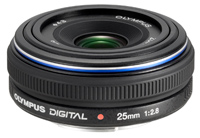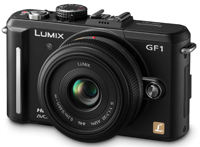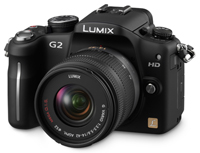The world’s first Micro Four Thirds System camera with features and performance to appeal to photo enthusiasts.Panasonic’s new Lumix DMC-G1 is the first model in an entirely new camera system, officially known as ‘Micro Four Thirds’ but sometimes dubbed ‘EVIL (Electronic Viewfinder Interchangeable Lens)’ to provide a better picture of the difference between it and a DSLR (which it resembles superficially). Cameras made for this system have no reflex mirror and no optical viewfinder. The sensor is also significantly larger than the sensor in similar-sized advanced digicams.



















